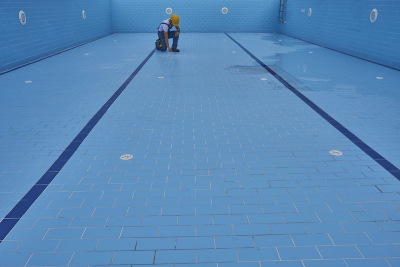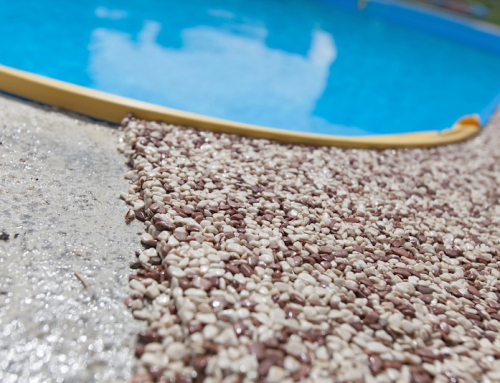Your pool should feel smooth, clean, and relaxing—not rough, faded, or constantly leaking. When the surface starts chalking, peeling, or losing water faster than usual, it’s a clear warning that something’s wrong. In Florida, heat, sun, and heavy chlorine speed up that wear, breaking down plaster and eating away at finishes long before you expect it. Each delay adds to your repair bill. That’s what starts as a minor surface flaw can lead to deep cracks or hidden leaks.
Now it’s where pool resurfacing in Florida makes all the difference. It restores strength, improves safety, and returns your pool to that crisp, clean look it once had. You’ll learn how to recognize early warning signs, understand what causes them, and know exactly when to act before minor wear turns into a full resurfacing job.
Why Florida Pool Surfaces Wear Out Faster
Florida’s climate puts every swimming pool to the test. Constant heat, harsh sunlight, and chemical-heavy water. All of these causes plaster surfaces to age faster than expected.
Over time, the bond between the plaster and the pool shell weakens, creating rough textures and visible cracks that lead to costly repairs. These conditions make pool resurfacing in Florida more common than in cooler regions. For official standards on pool maintenance and safety, see the Florida Administrative Code Rule 64E-9.004.
Harsh UV Rays and Year-Round Heat
Florida’s long summers mean your pool surface is exposed to UV rays almost every day. Constant sunlight fades, finishes, and breaks down the plaster bond, especially on older concrete or gunite pools. The heat causes the surface to expand and contract, creating hairline cracks that let water seep beneath the finish. Over time, this leads to chalking, flaking, and loose plaster, which roughens the texture and makes swimming less comfortable.
Water Chemistry and Saltwater Systems
Unbalanced water chemistry—especially low pH or high chlorine levels—gradually eats away at the pool’s interior. Salt systems can also leave behind crystals that act like sandpaper on plaster and tile. Combined with humidity, this speeds up erosion on pebble or quartz finishes and exposes metal fittings to rust.
So keeping your pool water balanced and scheduling regular maintenance helps slow surface wear and protect the structure from long-term damage.
How to Tell If Your Pool Needs Resurfacing

Florida’s heat and changing water chemistry wear surfaces faster than most realize. Spotting early warning signs helps you plan pool resurfacing in Florida before minor damage becomes a major expense.
Persistent Stains and Fading Color
Iron, calcium, and UV light leave stains that brushing or an acid wash can’t remove. When the finish and waterline tile stay discolored, the existing plaster has reached its limit and needs professional resurfacing.
Rough or Chalky Texture Underfoot
A gritty or chalky feel means the plaster surface is breaking down. Calcium loss and plaster flaking show that the bond between the plaster and pool shell is failing. Resurfacing restores a smooth texture and prevents deeper erosion.
Small Cracks or Peeling Layers
Hairline cracks and loose plaster let water seep into the shell. If small flaws start spreading across the pool’s interior, schedule swimming pool resurfacing before structural cracks form.
Unexplained Water Loss or Rising Bills
When water levels drop faster than usual, leaks through worn coatings are likely. Dye tests can confirm seepage around fittings or tile lines—a clear signal it’s time to resurface and stop the hidden water loss.
Performance Red Flags You Shouldn’t Ignore
Once the surface begins to fail, maintenance problems soon follow. These signs show your pool is working harder—and costing more—to stay clean and safe.
Water Harder to Keep Clean or Balanced
Worn plaster traps algae and fine debris, forcing you to scrub more often and use extra chlorine. Rough textures make it harder to stabilize water chemistry, especially in concrete pools with older finishes.
Increased Maintenance Time and Costs
Filters clog faster as plaster dust and loose pebbles circulate through the system. You’ll notice more frequent vacuuming and chemical use, and nearby metal fixtures may start showing rust stains. When upkeep becomes constant, pool resurfacing in Florida is the most cost-effective fix.
When It’s Time to Schedule Resurfacing in Florida
If cleaning feels endless and stains or leaks keep returning, the surface may be beyond routine care. Knowing when to plan pool resurfacing in Florida helps keep the structure safe and avoid emergency repairs before summer use.
Average Lifespan by Material and Climate Zone
Pool surfaces wear differently depending on materials and exposure. In Florida’s humid, high-UV conditions:
-
- Plaster typically lasts 7–10 years with proper water chemistry.
-
- Quartz finishes extend the life to 10–15 years and offer better stain resistance.
-
- Pebble or aggregate coatings last 15+ years but still need regular maintenance.
-
- Saltwater and heavy chlorine use can shorten these lifespans by several years.
Why Acting Early Saves Money
Ignoring small cracks or chalky patches allows water to seep behind the finish, creating structural cracks in the pool shell. Early swimming pool resurfacing prevents further damage and reduces total material and labor costs by up to 30 percent compared to full repairs.
Professional Inspection Recommendations
Have your pool surface checked by a reliable pool company at least once a year, ideally before Florida’s swim season starts. A trained eye can catch early signs like rust stains, peeling plaster, or rough patches and tell you if a quick replaster will do or if full resurfacing makes more sense.
Extending the Life of Your New Pool Surface
A new surface only lasts if it’s cared for consistently. Regular upkeep helps maintain the pool’s appearance and structural integrity.
-
- Maintain Proper Water Balance Year-Round: Test pH and alkalinity weekly to prevent chemical erosion or metal staining.
-
- Schedule Seasonal Cleanings and Sealing: Deep clean and reseal before Florida’s rainy season to protect the finish from excess moisture and debris.
-
- Brush and Inspect Weekly: Prevent algae buildup and spot small issues on the pool’s interior before they spread.
-
- Use Proper Equipment: Soft-bristle brushes and non-abrasive tools preserve a smooth texture and slip-resistant surface.
Consistent maintenance keeps your resurfacing investment strong and your pool ready for every season.
Protect Your Investment with Timely Pool Resurfacing in Florida
Caring for your pool isn’t just about looks—it’s about keeping the structure sound and ready for years of use. Spotting early warning signs like fading, roughness, or small leaks helps prevent deeper damage and avoids the high cost of full reconstruction later. Florida’s intense heat and weather make surfaces wear faster, so taking action before the next swim season protects both safety and value.
If your pool in Orlando, Tampa, or Fort Lauderdale shows signs of wear, don’t wait for cracks or stains to spread. Contact Creative Resurfacing Solutions for a free inspection and quote, and get expert advice on the best resurfacing plan for your pool’s condition.






